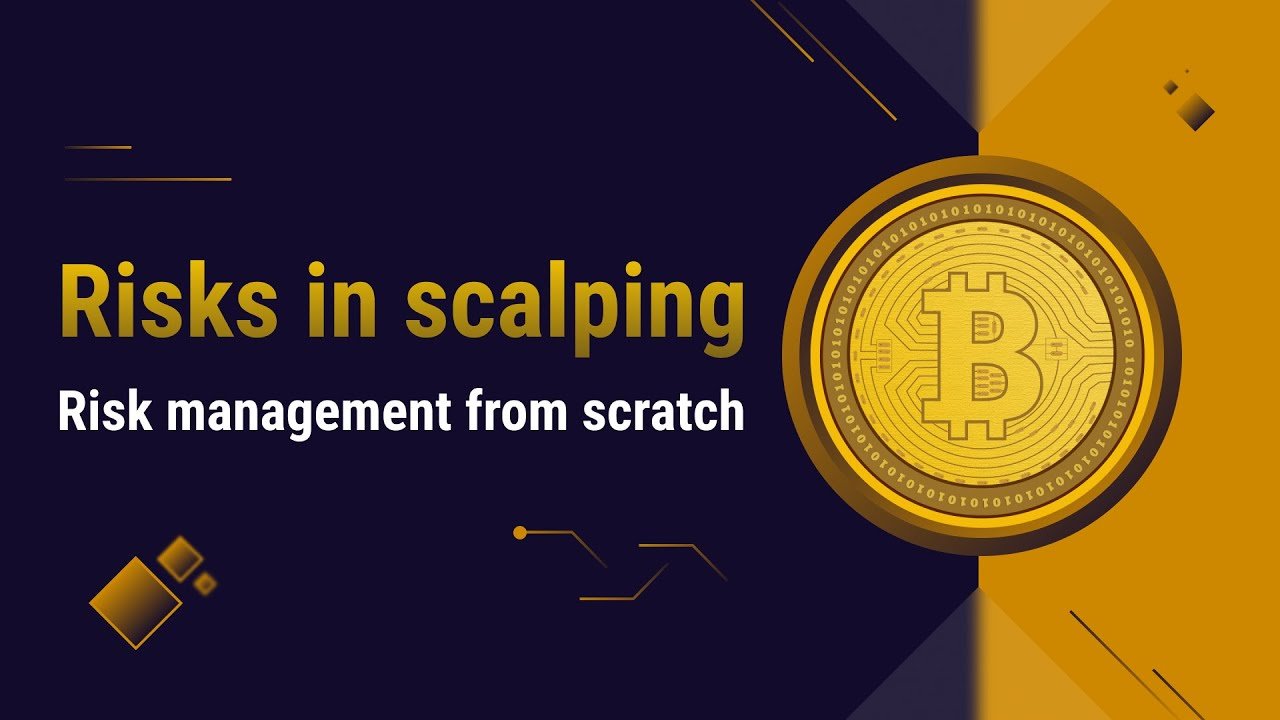The cryptocurrency market’s volatility presents unique opportunities for traders who execute quick trades.
Crypto scalping takes advantage of minor price changes to extract small profits, rather than waiting for major shifts.
Unlike long-term investing, scalping demands technical precision, swift decision-making, and effective risk management.
As the market evolves, scalping has become more sophisticated, with traders employing advanced analysis, automated bots, and precise entry and exit points to boost returns.
This article covers the fundamentals of crypto scalping, essential strategies, and practical techniques for success.
Crypto Scalping

What is Scalp Trading in Crypto?
Crypto scalping is a trading style that capitalizes on small, frequent price changes in the cryptocurrency market.
Scalpers typically hold positions for seconds to minutes, executing numerous trades throughout a single day. The strategy focuses on accumulating small profits from each trade, which collectively can yield significant returns over time.
At its core, scalp trading in crypto involves identifying short-term trends and patterns, entering positions at strategic price levels, and exiting quickly once a small profit target is reached. This trading approach requires exceptional focus, discipline, and the ability to make quick decisions based on technical indicators and market conditions
The Attraction of Quick Profits in Cryptocurrency Trading
The appeal of crypto scalping lies in its potential to generate consistent profits regardless of the broader market direction. The crypto market’s high volatility and liquidity create ideal conditions for scalpers who thrive on price fluctuations.
Unlike long-term investors who may need to wait months or years to see substantial returns, scalpers can potentially profit multiple times daily from small price changes.
Additionally, cryptocurrency trading occurs 24/7, providing endless opportunities for scalp traders to enter and exit positions based on market behavior. The combination of tight spreads on major cryptocurrency pairs and the ability to use leverage further enhances the appeal of this trading style, allowing traders to amplify their small gains into more substantial profits.
Platforms For Crypto Scalping

Selecting the right platform is important for effective scalping in the cryptocurrency market. The best crypto exchanges for scalping offer features specifically beneficial to high-frequency traders:
MEXC stands out with maker fees as low as 0.01% and taker fees of 0.04%, plus impressive 400x leverage capabilities. For traders preferring privacy, BTCC offers no KYC requirements while providing 500x leverage.
Bybit remains popular among scalpers due to its advanced trading features and reliable execution, while Binance leverages its position as the largest crypto exchange to provide deep liquidity and tight spreads essential for scalp trading.
When selecting a platform for crypto scalping, traders should prioritize:
- Low transaction costs to preserve profits from small trades
- High liquidity to ensure quick execution
- Tight spreads to minimize entry and exit costs
- Reliable infrastructure to prevent costly delays during high volatility periods.
Psychological and Practical Considerations For Scalpers

Crypto scalping needs special skills, a strong mind, and self-control. Scalpers work in fast-paced places where quick choices matter. Staying calm during price swings is very important. If you panic, you might miss your chance or lose money. It is key to control your feelings.
Crypto scalping thrives on price volatility, as it allows traders to capitalize on rapid fluctuations in the market for quick profits.
For practical work, scalpers must have a good internet connection and fast access to trading sites. They also need to see market changes in real-time. Using trading bots or limit orders can help make choices easier and keep things steady when prices change a lot.
A smart plan for risk management with clear stop-loss and take-profit points keeps trades sensible instead of emotional.
Success in scalping relies on having a routine.
Building a regular process, looking over trades often, and changing with market shifts help traders succeed while others may fail.
Though earnings might be small at first, the right mindset and planning can lead to steady profits over time.
Crypto Scalping Strategy

Price Action
Price action trading forms the backbone of many successful crypto scalping strategies.
This approach focuses on analyzing raw price movements without relying heavily on indicators. For scalpers, identifying key support and resistance levels is of great importance for determining potential reversal points where short-term trades can be executed.
Price action scalpers look for specific patterns like pin bars, engulfing patterns, and doji formations that signal short-term reversals. These patterns, when identified in conjunction with support and resistance zones, provide high-probability entry points for quick scalp trades with clearly defined exit position.
Arbitrage
Arbitrage scalping exploits price differences of the same cryptocurrency across different exchanges.
This strategy involves buying a cryptocurrency on the exchange where it’s priced lower and simultaneously selling it on another exchange where it’s priced higher, profiting from the price differential.
While conceptually simple, successful arbitrage requires:
- Ultra-fast execution capabilities
- Accounts on multiple platforms with pre-funded balances
- Sophisticated trading algorithms to identify and act on opportunities
- Careful consideration of withdrawal fees and transaction times between exchanges
Arbitrage represents one of the lower-risk crypto scalping approaches, as it doesn’t rely on price prediction but rather on existing market inefficiencies.
Bid-Ask Spread
Bid-ask spread scalping focuses on the small gap between the highest price a buyer is willing to pay (bid) and the lowest price a seller is willing to accept (ask).
Scalpers profit by placing buy orders at the bid price and quickly selling at the ask price, effectively acting as market makers.
This strategy works best in liquid markets with tight spreads where the trading volume is high enough to ensure quick order fills. Successful bid-ask spread scalpers typically:
- Focus on cryptocurrency pairs with high trading volumes
- Use limit orders rather than market orders to control execution prices
- Implement automation to execute trades with minimal delays
- Monitor spread widening during volatile market conditions for increased profit potential
Margin Trading With Leverage
Leverage amplifies both the profit potential and risks of crypto scalping. By borrowing funds from the exchange, traders can control positions much larger than their actual capital would allow, magnifying the impact of small price changes.
Platforms like MEXC and BTCC offer leverage up to 400x and 500x respectively, though most experienced scalpers recommend using leverage conservatively. When incorporating leverage into a crypto scalping strategy:
- Start with lower leverage ratios (2-5x) until comfortable with the strategy
- Implement strict stop-loss orders to prevent catastrophic losses
- Calculate position sizes based on maximum acceptable loss rather than potential profit
- Adjust leverage based on market volatility and trading confidence
Crypto Trading Tools and Indicators

Support and Resistance
Support and resistance levels are fundamental to effective scalp trading in crypto. These price levels represent areas where historical buying (support) or selling (resistance) pressure has been significant enough to temporarily halt price movement.
Scalpers use these levels to:
- Identify potential reversal points for quick trades
- Set precise entry and exit positions
- Place stop-loss orders just beyond these levels
- Anticipate price bounces or breakouts for short-term profit opportunities
When combined with volume analysis, support and resistance levels become even more powerful tools for timing short-duration trades.
Moving average (MA)
Moving averages smooth out price data to create a single flowing line, making it easier to identify the direction of the trend. For crypto scalping, shorter-period moving averages (5, 10, or 20 periods) are most useful for capturing rapid market changes.
Scalpers commonly employ moving average strategies such as:
- Trading bounces off a moving average during strong trends
- Looking for crossovers between fast and slow moving averages for entry signals
- Using moving average convergence/divergence (MACD) for momentum confirmation
- Identifying when price pulls back to a moving average during a trend for potential entry points
Relative Strength Index (RSI)
The Relative Strength Index (RSI) measures the speed and change of price movements, identifying overbought or oversold conditions. For crypto scalping, the RSI provides valuable insights into potential reversal points for short-term trades.
Scalpers typically use RSI with the following approaches:
- Entering long positions when RSI crosses above 30 (oversold territory)
- Entering short positions when RSI crosses below 70 (overbought territory)
- Looking for RSI divergence with price as a stronger reversal signal
- Adjusting the RSI period to match their specific timeframe (shorter periods for more signals)
Parabolic SAR (Stop and Reverse)
The Parabolic SAR indicator places dots above or below price candles to signal potential reversals. For scalp trading in crypto, this indicator provides clear visual signals for both entry and exit points.
Effective application of Parabolic SAR in scalping includes:
- Entering long positions when the dots flip from above to below the price
- Entering short positions when the dots flip from below to above the price
- Using the dots as trailing stop-loss levels during the trade
- Combining with trend indicators to avoid false signals during ranging markets
Fibonacci Retracement
Fibonacci retracement levels help identify potential support and resistance levels based on the Fibonacci sequence. For crypto scalping, these levels offer precise entry and exit points during price retracements.
Scalpers use Fibonacci retracements by:
- Drawing the tool from a significant swing low to a swing high (or vice versa)
- Looking for price reactions at key levels (23.6%, 38.2%, 50%, 61.8%)
- Entering trades when the price confirms a bounce from a Fibonacci level
- Setting profit targets at the next Fibonacci level in the direction of the trade
Advanced Scalping Techniques

Utilizing Leverage Effectively
Leverage can significantly enhance scalping results when used judiciously:
- Scale leverage according to trade conviction – use higher leverage only for the most promising setups.
- Reduce leverage during unpredictable market conditions or high volatility periods.
- Calculate maximum possible drawdown before applying leverage to ensure risk remains manageable.
- Consider implementing a tiered leverage approach – using different levels based on specific indicators or setups.
- Never use maximum available leverage; maintain a buffer for unexpected market movements.
Mastering Short-Term Trading Indicators
Advanced scalpers develop nuanced approaches to indicator interpretation:
- Look for confluence between multiple indicators rather than relying on any single signal.
- Customize indicator settings to match specific cryptocurrency characteristics and trading timeframes.
- Develop expertise in oscillator divergence detection for early reversal signals.
- Combine volume-based indicators with price action for confirmation of momentum.
- Create custom indicator combinations through trading platform scripting tools for unique market insightS.
Risk Management in Crypto Scalping

Setting Stop-Loss and Take-Profit Points
Disciplined risk management is non-negotiable for sustainable scalping:
- Set stop-loss orders at technical levels rather than arbitrary price points or fixed percentages.
- Maintain a positive risk-reward ratio – typically aiming for at least 1:1.5, even for short-term trades.
- Consider time-based stops for trades that don’t move as expected within a specific timeframe.
- Implement progressive profit-taking strategies for larger positions, securing partial profits at different levels.
- Never move stop-losses to accommodate losing trades – this violates fundamental risk management principles.
The Importance of Consistent Trade Review

Performance analysis drives continual improvement:
- Document all trades with screenshots, noting entry/exit reasons and relevant market conditions.
- Calculate key performance metrics beyond simple profit/loss – win rate, average win/loss, maximum drawdown.
- Identify patterns in successful and unsuccessful trades to refine strategy.
- Review performance across different market conditions to identify environmental strengths and weaknesses.
- Regularly reassess risk parameters based on account growth or drawdown to maintain appropriate exposure levels.
Conclusion
Crypto scalping is an interesting way to trade. It works well for those who have the right mindset.
Traders also need good tools and skills for fast trades. The ups and downs of the crypto market help skilled scalpers make profits. They can do this no matter what the market is doing.
To be successful in crypto scalping, traders must follow rules and manage risks carefully.
Quick profits can happen, but this method takes a lot of work.
Traders need to study the market closely, pay attention to details, and keep their feelings in check. If traders want to improve these skills, they can take advantage of price changes easily.
Like any trading method, managing risks is very important.
By using good technical analysis, choosing the right platform, and trading with discipline, traders can create a strong crypto scalping plan that fits their goals and risk levels.
FAQ’s:
What is the Best Timeframe For Crypto Scalping?
The most effective timeframes for crypto scalping are typically 1-minute, 3-minute, and 5-minute charts. The 15-minute timeframe is also popular among scalpers seeking slightly longer holding periods.
The ideal timeframe depends on individual trading style, with shorter intervals providing more frequent opportunities but potentially more market noise, while slightly longer timeframes may offer clearer signals but fewer trading opportunities.
Is Scalping Trading Profitable?
Scalp trading can make money if you have a good plan and manage risks well. How much you earn depends on market trends. It also relies on your skills in technical analysis. Choosing the right platform is important, too. You need to stick to your entry and exit points with discipline. Each trade may give small gains, but many trades can add up to big returns.
However, transaction costs can cut into profits. Your emotions must be controlled, and precision is key to success in scalping.
What Makes Scalping Beneficial in Crypto Markets?
Crypto markets are great for scalping. They operate all day and night. They also have high changes in prices. This is good for scalpers.
Unlike normal markets, crypto prices often move a little. This helps those who scalp.
Many crypto exchanges charge low fees. They also provide high leverage for traders. This makes fast trading easier.
The online nature of these markets lets bots work well. These bots can make quick trades that help scalpers succeed.
